The basilica, which today has three naves, was built around 1080 on the old foundation walls after the demolition of the old St. Peter's Church, while retaining the original mass. Its interior was already equipped with rich paintings at the beginning. The painting in the apse, which is still visible today, dates from 1104-1105. Characteristic of the new building of the 11th century is the east tower facade, visible from afar, with its two towers, which were raised in the 15th century and given their pointed red hoods. In the late Middle Ages, a porch was added to the west. In 1750/60 the interior of St. Peter and Paul was remodeled in the rococo style. The windows were enlarged, the flat wooden ceiling was replaced by a stuccoed rococo vault and the organ loft in the western part was added.
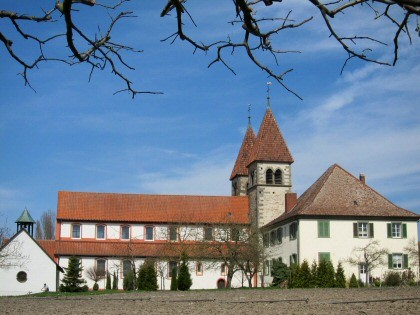
The south side in April 2011
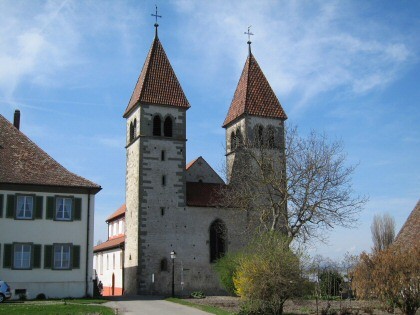
East tower facade
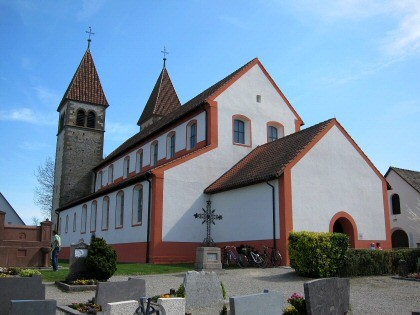
On the west side of the church is the local cemetery.
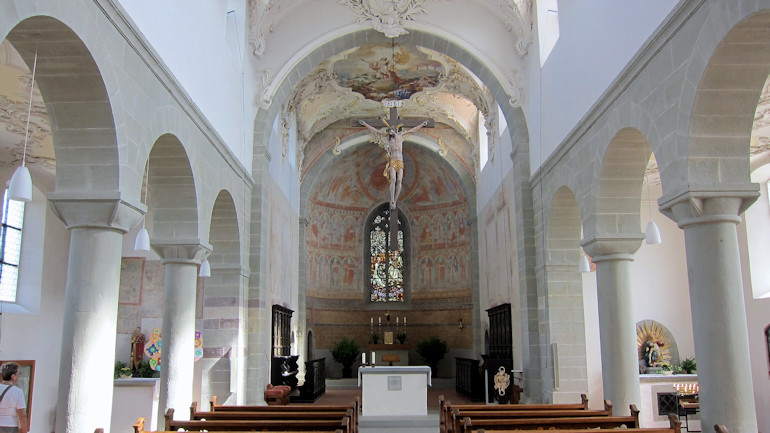
Inside the church, which seems somewhat strange in its mix of styles, the Romanesque columns radiate calm and solidity. A baroque cross hangs in front of the choir.
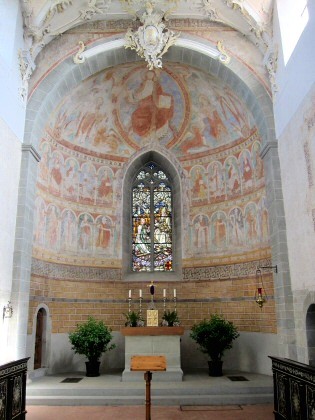
The fresco in the apse is divided into three zones. In the uppermost zone the Majestas Domini is depicted, accompanied by the four evangelist symbols. On the right and left Peter and Paul pay homage. In the middle zone are the twelve apostles, below them are depicted prophets.